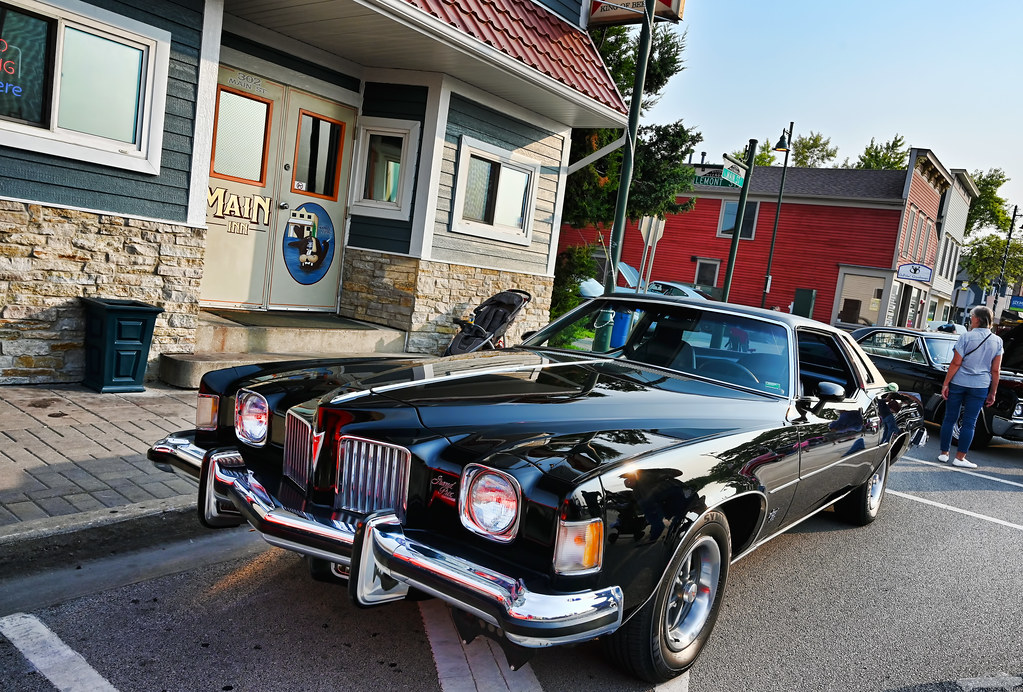
There’s something undeniably alluring about muscle cars; they exude strength, power, and an unapologetic boldness that has captivated car enthusiasts for decades. Yet, beneath the glossy paint and roaring engines, not all muscle cars are as desirable as they may seem. After thorough research, expert insight, and firsthand accounts from drivers, we’ve curated a list of muscle cars that initially seemed irresistible but fell short once behind the wheel. These are the vehicles that taught us the valuable lesson: not everything that glitters is gold.
Pontiac Grand Prix (1973)
The 1973 Pontiac Grand Prix, with its distinct body style and spacious interior, was an irresistible offering at first glance. Its luxury-like features and stylish design were enough to turn heads and pique interest. However, the car’s hefty size made it less nimble than desired, diminishing the expected muscle car experience.
Under the hood, the Grand Prix was equipped with a 400-cubic-inch V8 engine that, unfortunately, struggled to deliver the power needed to propel its significant weight. This noticeable lack of speed and agility quickly turned off many enthusiasts, leaving this model in the dust of its competitors.
Ford Mustang II (1974)
Ford’s Mustang is an iconic brand that defines the muscle car genre. However, the Mustang II, released in 1974, was a disappointment to many. Attempting to adapt to changing market demands, Ford downsized the Mustang, resulting in a compact frame that seemed to betray its muscle car roots.
Powered by a weak four-cylinder engine, the Mustang II lacked the power and performance that defined its predecessors. Moreover, its handling was uninspiring, and the car was notorious for its lackluster fuel economy. The Mustang II is a poignant reminder that bigger isn’t always better, but sometimes, smaller isn’t either.
AMC Gremlin (1970-1978)
The AMC Gremlin, with its unique, almost comical design, was a car that intrigued many. Its compact size and quirky personality made it an instant conversation starter. However, the driving experience was far from the muscle car ideal.
The Gremlin’s performance was underwhelming, to say the least. Its small inline-six engine struggled to provide sufficient power, and the car’s handling was notoriously poor. The Gremlin’s odd rear-end design also led to a cramped and uncomfortable interior, further tarnishing its appeal.
Chevrolet Chevelle (1973)
The 1973 Chevrolet Chevelle was a classic muscle car that appeared to have it all: a robust design, a powerful engine, and a brand name synonymous with quality. However, drivers quickly discovered that its heavy weight and disconnected steering greatly compromised its performance.
Additionally, the Chevelle was a gas guzzler, making it an expensive ride to maintain. Its large size also made it difficult to navigate in tight spaces, and the car suffered from considerable body roll. Despite its impressive looks, the Chevelle quickly lost its luster once driven.
Plymouth Volare Road Runner (1976)
When Plymouth introduced the Volare Road Runner in 1976, it promised to deliver the same thrilling performance as its iconic namesake. However, the reality fell far short of these lofty expectations.
The Volare Road Runner was plagued by a host of mechanical issues, from its unreliable electrical system to its weak engine. Moreover, its handling was poor, and the car was notorious for its rust problems. It didn’t take long for disappointment to set in among those who eagerly awaited this underperforming Road Runner.
Mercury Cougar (1973)
The Mercury Cougar was initially a highly sought after muscle car. Its sleek design, comfortable interior, and powerful engine intrigued many. However, its 1973 model proved to be a disappointment.
The car’s bulky size and heavy weight hampered its performance, and it struggled to deliver the power and agility expected of a muscle car. Its handling was lackluster, and the car was known for its poor fuel economy. For many enthusiasts, the Cougar was a lesson in not judging a book by its cover.
Chevrolet Camaro (1982)
The Chevrolet Camaro is another iconic name in the muscle car world. However, the 1982 model, despite its sleek design and sporty appeal, was a letdown for many drivers.
The Camaro’s V8 engine was underpowered, leading to less than inspiring performance on the road. In addition, its handling was clunky, and the car was known for its poor build quality and reliability issues. The 1982 Camaro is a stark reminder that even the most reputable brands can sometimes fall short.
These seven muscle cars serve as a reminder that looks can be deceiving, and a shiny exterior doesn’t always equate to a satisfying driving experience. They also remind us of the ever-evolving nature of automotive design and technology. So whether you’re a seasoned collector or a casual enthusiast, keep these lessons in mind the next time you’re captivated by a muscle car’s roar or gleaming paint job. Because, as these examples show, sometimes even the most appealing cars can leave us longing for more once we’ve actually taken them for a spin.
